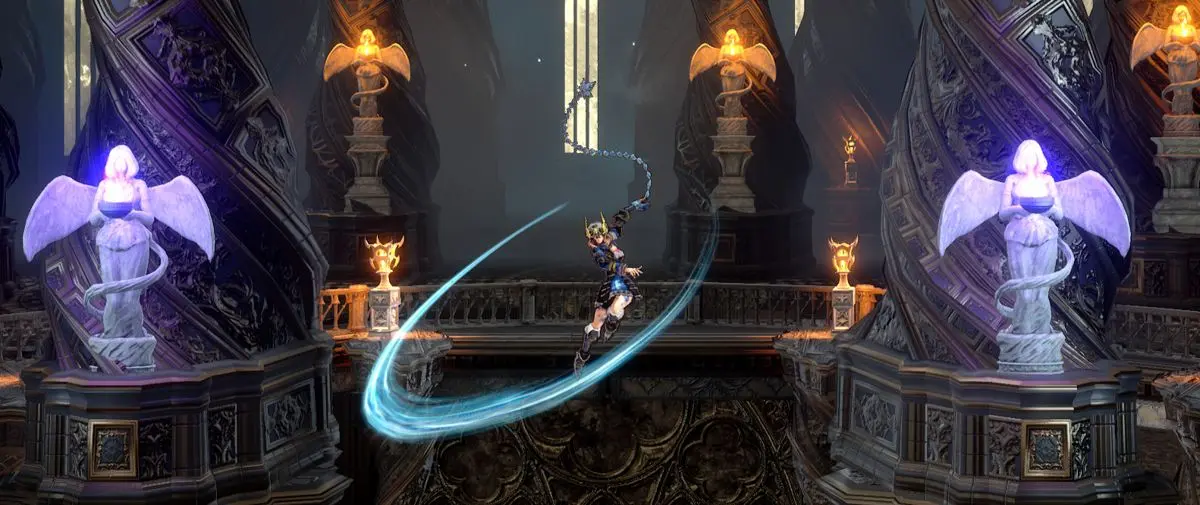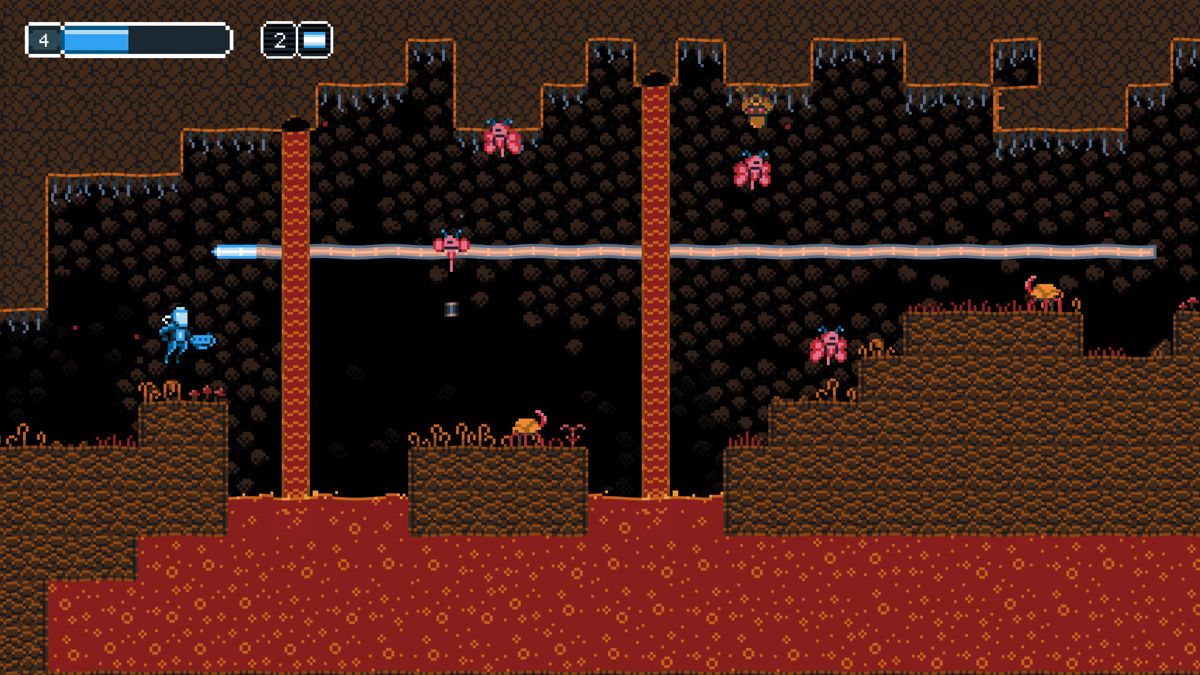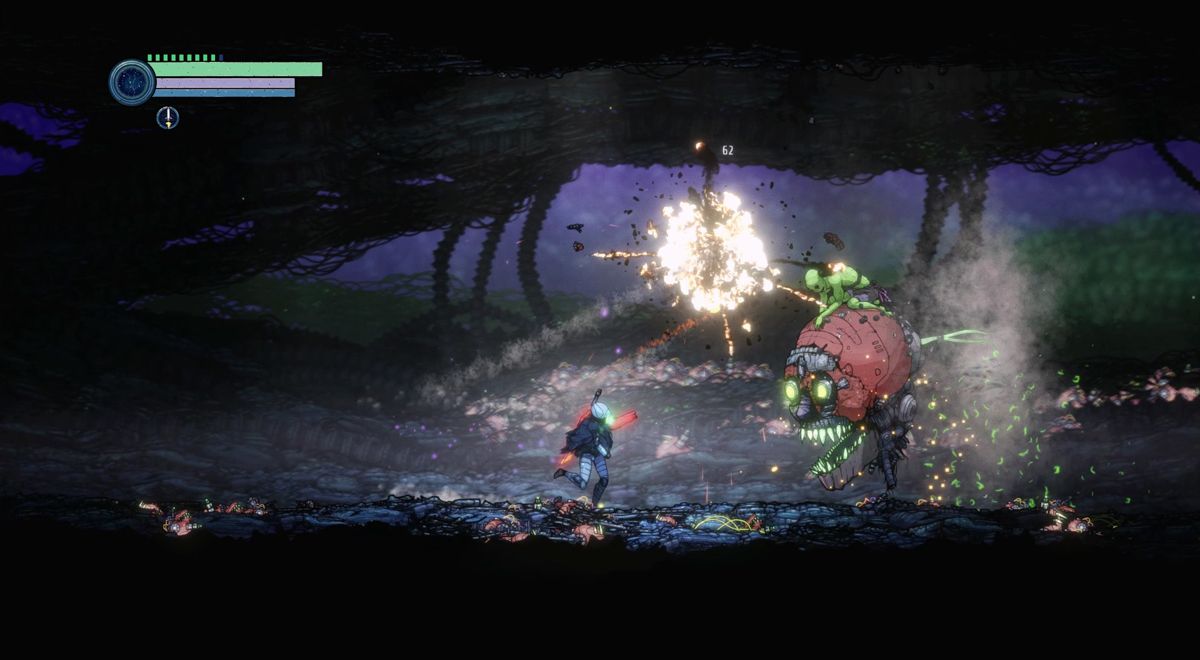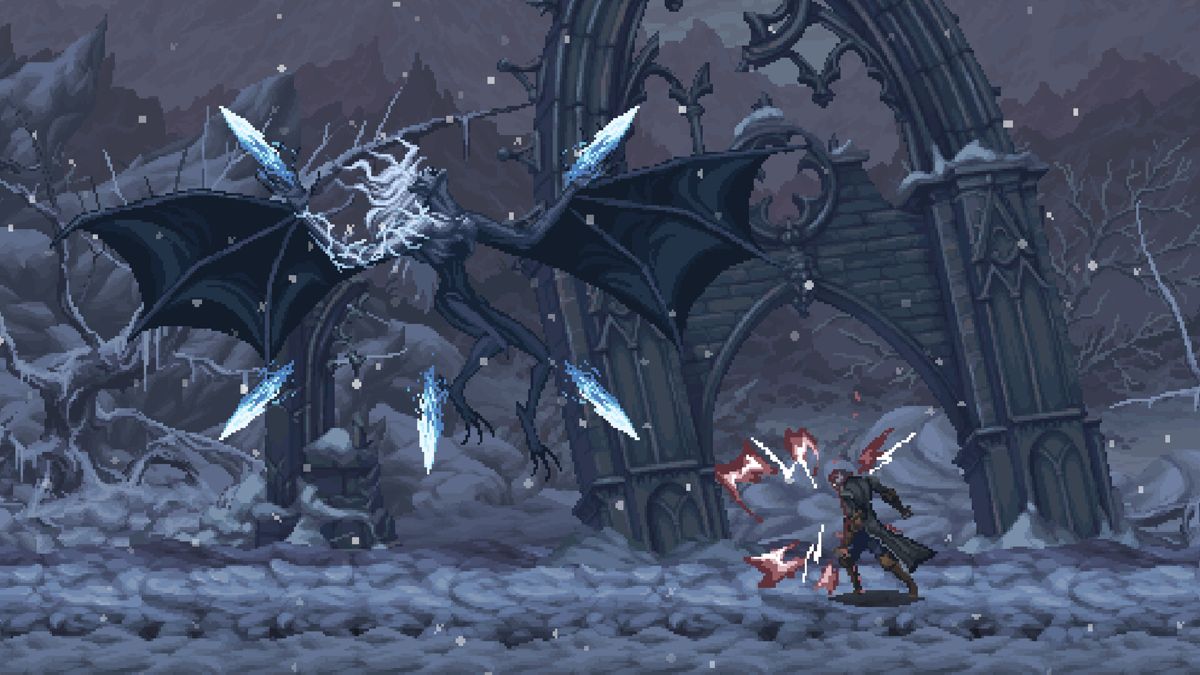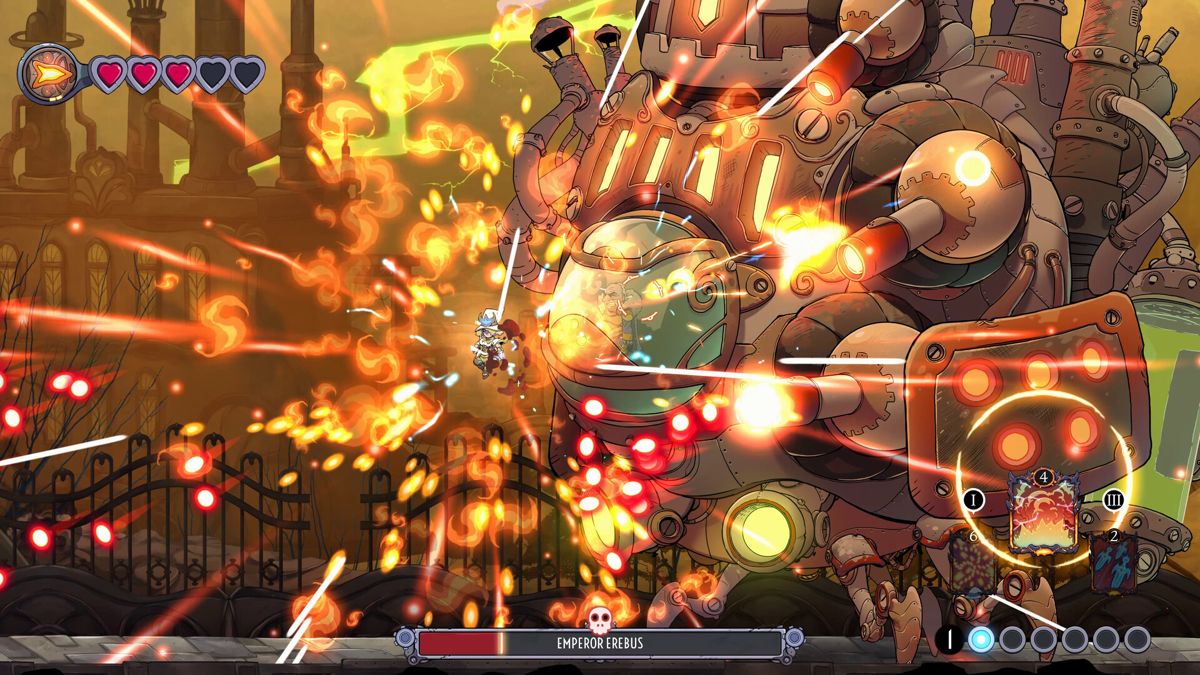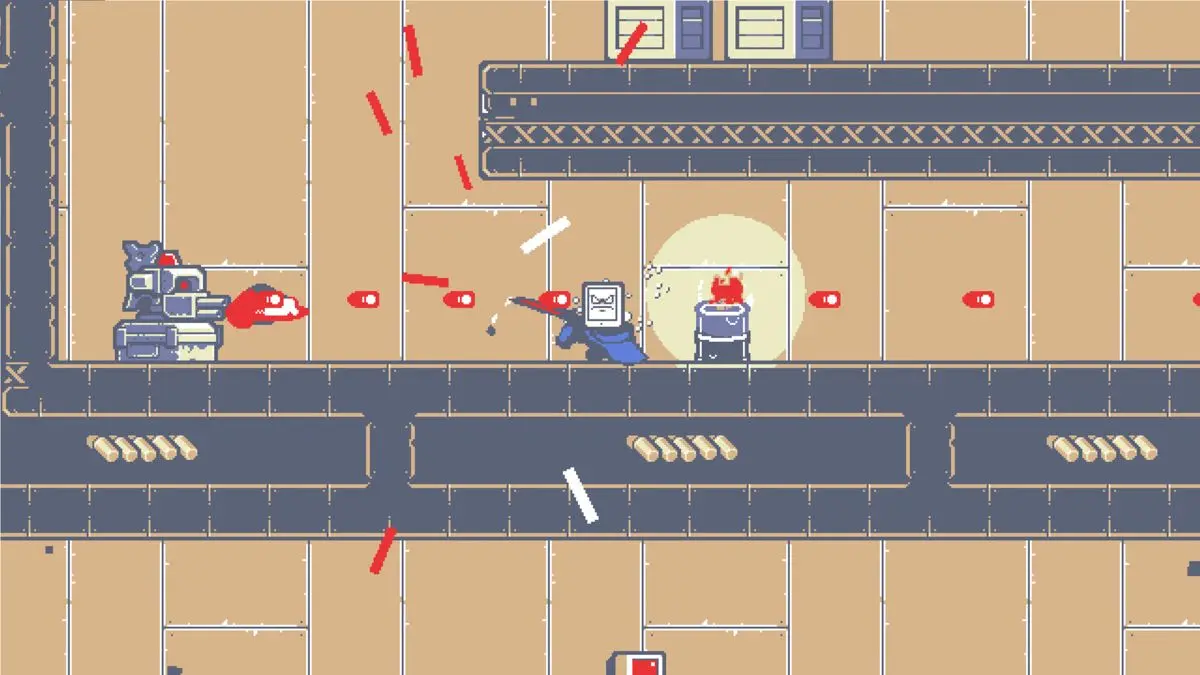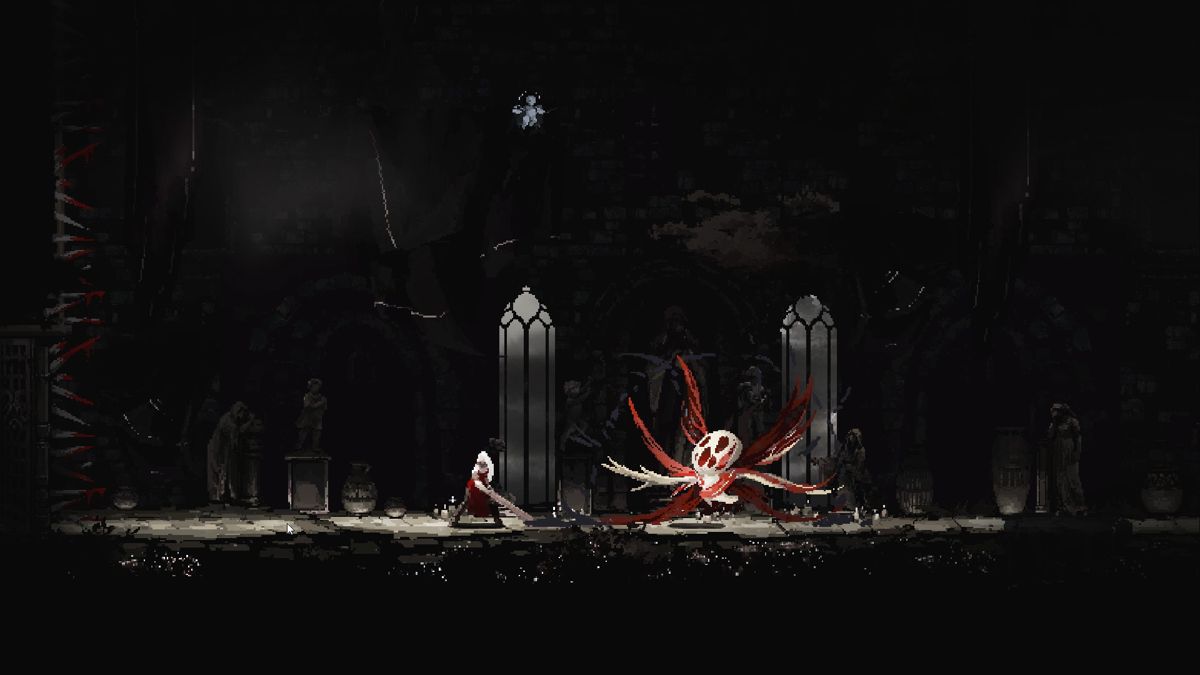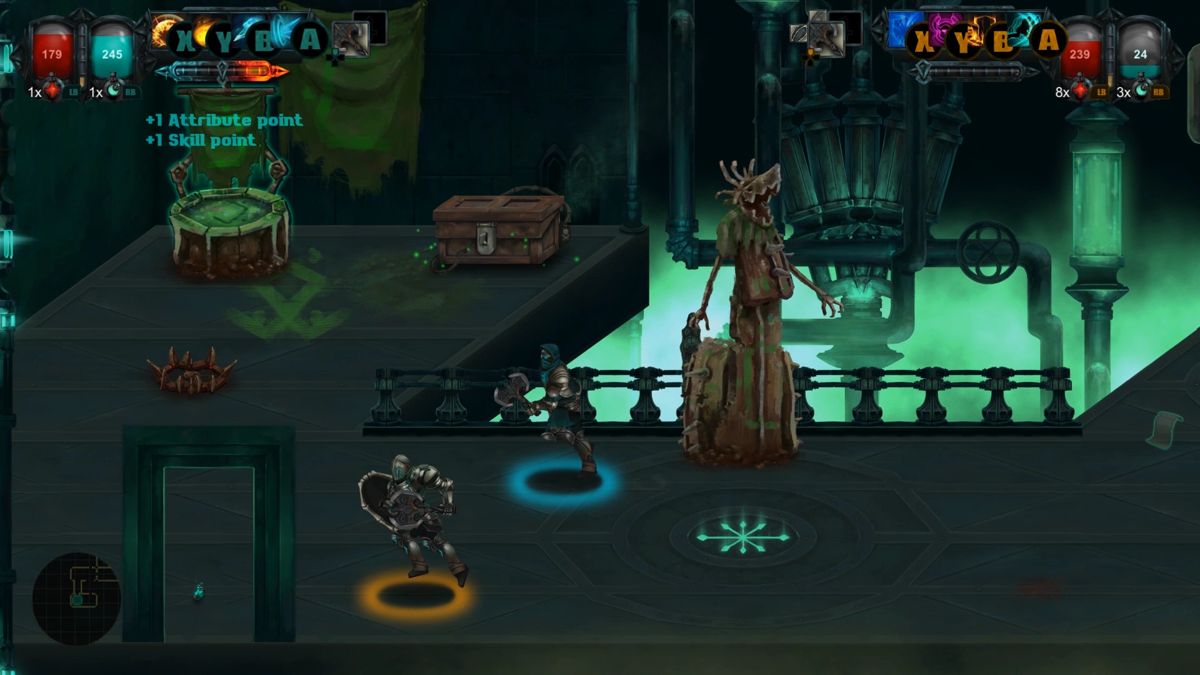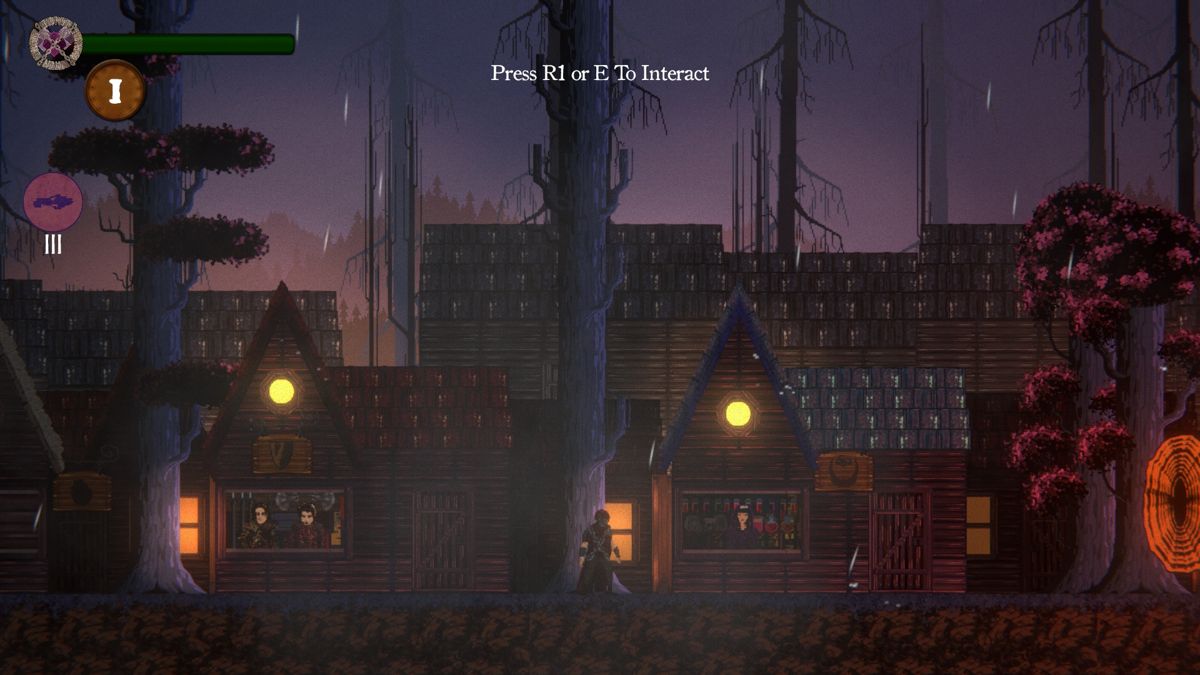Results
Bloodstained: Ritual of the Night
igavania, grindy, hidden areas
Bloodstained: Ritual of the Night is a critically acclaimed Metroidvania-style action-adventure game developed by Koji Igarashi, the godfather of the Igavania subgenre. Drawing inspiration from his work on the iconic Castlevania series, Igarashi has crafted a meticulously designed game that pays homage to the genre's roots while introducing fresh mechanics and elements. The game stands out for its intricate level design, featuring a vast and interconnected castle filled with labyrinthine passages, hidden rooms, and secret shortcuts. Exploration is rewarded with a wealth of power-ups, weapons, and equipment, allowing players to backtrack and access previously inaccessible areas in true Metroidvania fashion. Combat is a central pillar of the experience, with a diverse array of enemies that require strategic positioning and skillful use of various weapons and abilities. Bloodstained boasts a vast arsenal, including swords, spears, whips, and a variety of magical abilities, each with its own unique properties and attack patterns. One of the game's standout features is the Shard system, which allows players to equip and mix-and-match various abilities and passive bonuses, creating unique character builds tailored to their playstyle. This system adds depth and replayability, encouraging experimentation with different shard combinations. Visually, the game showcases a stunning art style, with meticulously crafted backgrounds that capture the gothic horror atmosphere. The attention to detail in the character designs and enemy animations is truly impressive, evoking a sense of nostalgia while maintaining a distinct and modern aesthetic. Overall, Bloodstained: Ritual of the Night is a must-play for fans of the Metroidvania genre, offering a challenging and rewarding experience that pays homage to its roots while introducing fresh ideas and mechanics that solidify its place as a modern classic.
Escape from Thethys
sci-fi, pixel art, challenging
Escape from Thethys is a 2D metroidvania-style action-platformer released in 2018. The game is set on the underwater moon Thethys, where the player takes control of a deep-sea diver trying to escape a mysterious underwater facility. Key features of the game include: 1. Procedurally generated levels: While the overall structure of the game world remains consistent, the specific layouts of rooms and placement of items change with each playthrough, enhancing replayability. 2. Unique weapon system: The player's primary weapon is a harpoon gun that can be upgraded and modified throughout the game, allowing for various combat strategies and puzzle-solving approaches. 3. Environmental hazards: The underwater setting introduces challenges like pressure management and oxygen conservation, adding an extra layer of complexity to exploration. 4. Boss battles: The game features large-scale encounters with mutated sea creatures and advanced security systems. 5. Multiple endings: The player's choices and actions throughout the game can influence the final outcome, encouraging multiple playthroughs. 6. Retro-inspired visuals: The game uses a pixel art style reminiscent of 16-bit era games, but with modern lighting and particle effects to enhance the underwater atmosphere. 7. Nonlinear progression: While there is a main story path, players can often tackle areas in different orders, discovering alternate routes and secrets. 8. Limited resources: The game emphasizes resource management, with scarce ammunition and health pickups encouraging careful play. Escape from Thethys stands out in the metroidvania genre for its unique setting and the way it incorporates underwater survival elements into the traditional exploration and upgrade-based gameplay.
Ghost Song
igavania, sci-fi, challenging
Ghost Song is a Metroidvania-style game developed by Old Moon and published by Humble Games in 2022. Here are some key aspects of the game: 1. Setting: The game takes place on the desolate moon of Lorian, featuring a mysterious and atmospheric sci-fi environment with bio-mechanical elements. 2. Narrative: The story follows a female protagonist who awakens from a long slumber with no memory of her past. The narrative unfolds through environmental storytelling and interactions with other characters. 3. Combat system: Ghost Song features a unique blend of ranged and melee combat. The protagonist's arm cannon can be charged for more powerful shots, and there's a risk-reward system where players can sacrifice health for increased firepower. 4. Upgrade system: Rather than traditional experience points, the game uses a "Nanogel" system for upgrades. Players can choose to enhance either their health or weapon energy, creating a strategic element to character progression. 5. Sound design: The game features an atmospheric soundtrack that adapts to different areas and situations, enhancing the eerie and isolated feel of the moon. 6. Boss design: Bosses in Ghost Song are often large, intimidating creatures that require learning attack patterns and exploiting weaknesses to defeat. 7. Interconnected world: The map design features multiple paths and shortcuts, encouraging exploration and backtracking with new abilities. 8. Visual style: The game employs a hand-drawn art style with detailed backgrounds and character designs, mixing organic and mechanical elements. 9. Difficulty balance: Ghost Song aims for a challenging but fair difficulty curve, with save points strategically placed before difficult encounters. 10. Hidden lore: Much of the game's backstory and world-building is tucked away in optional areas and interactions, rewarding thorough exploration. Ghost Song stands out in the Metroidvania genre with its unique setting, atmospheric storytelling, and blend of combat styles, offering a fresh take on familiar gameplay mechanics.
The Last Faith
igavania, pixel art, challenging
The Last Faith is a 2D side-scrolling action-platformer released in 2023, developed by Kumi Souls Games and published by Playstack. It falls firmly within the Metroidvania subgenre, with clear inspirations from games like Castlevania: Symphony of the Night and Bloodborne. The game is set in a dark, gothic world and features pixel art graphics with detailed backgrounds and fluid animations. Players control a character named Eric, exploring a vast, interconnected world filled with hostile creatures and challenging boss encounters. As typical for the genre, The Last Faith emphasizes exploration and character progression. Players gradually unlock new abilities and weapons that allow access to previously unreachable areas. The combat system is fast-paced and punishing, incorporating elements reminiscent of Soulslike games, including a stamina system and high difficulty. The Last Faith distinguishes itself with its intricate level design, atmospheric soundtrack, and a blend of melee and ranged combat options. The game also features multiple endings, encouraging replayability and thorough exploration. Given your familiarity with the genre, you'll likely appreciate The Last Faith's attempt to merge classic Metroidvania elements with more modern Soulslike mechanics, creating a challenging and atmospheric experience that pays homage to its influences while carving out its own identity.
The Knight Witch
fantasy, shooter, igavania
The Knight Witch features a large, interconnected world that players gradually unlock as they gain new abilities and powers. As is common in Metroidvania games, players will encounter areas that are initially inaccessible, requiring them to backtrack later with new skills to progress. The game incorporates a unique magic system where players can collect and use different spell cards, adding a strategic layer to the typical Metroidvania formula. This system allows for customization of the player's combat style and approach to puzzles. As players explore the underground city of Dungeonidas, they'll upgrade their abilities and become more powerful, a hallmark of the Metroidvania genre. The game also features a non-linear structure, allowing players to choose different paths and tackle objectives in various orders. The Knight Witch combines these Metroidvania elements with bullet hell-style combat, creating a hybrid experience that sets it apart from more traditional entries in the genre. The game's mix of hand-drawn art style and magical themes gives it a distinctive aesthetic within the Metroidvania landscape. Overall, while The Knight Witch introduces some unique elements, it adheres to many core Metroidvania principles, making it recognizable to fans of the genre while offering its own twist on the formula.
Kunai
grappling hook, double jump, wall jump
Kunai is a fast-paced, challenging 2D action-platformer that takes inspiration from classic games like Contra and Ninja Gaiden, while infusing modern game design elements. Developed by the indie studio TurtleBlaze, Kunai stands out with its unique blend of intense combat, precise platforming, and a robust suite of unlockable abilities and upgrades. One of the game's most distinctive features is its grappling hook mechanic, which allows players to quickly traverse levels by swinging from designated grapple points. This not only adds an extra layer of mobility but also introduces intricate platforming challenges that require precise timing and dexterity. The combat system in Kunai is equally engaging, offering a variety of weapons and abilities that players can unlock and upgrade as they progress. From katanas and shuriken to devastating special attacks, the combat encourages players to experiment with different playstyles and combos to overcome the game's challenging enemies and bosses. Another noteworthy aspect of Kunai is its emphasis on replayability and exploration. Levels are designed with multiple paths and hidden secrets, incentivizing players to revisit areas and uncover every corner of the game's meticulously crafted world. Additionally, the game features a New Game+ mode, which adds further challenges and rewards for those seeking an even greater level of difficulty. Visually, Kunai boasts a striking pixel art aesthetic that pays homage to classic 8-bit and 16-bit games while incorporating modern visual effects and animations. The level design is intricate and varied, ranging from lush forests to industrial complexes, each with its own unique hazards and obstacles. Overall, Kunai is a challenging and rewarding experience for fans of the action-platformer genre, offering a fresh take on classic gameplay mechanics while introducing its own unique twists and features.
Moonscars
igavania, challenging, hidden areas
Moonscars is a 2D side-scrolling action-platformer released in 2022, developed by Black Mermaid and published by Humble Games. It falls into the Metroidvania subgenre, with a dark fantasy aesthetic and challenging, Souls-like combat mechanics. Given your familiarity with the genre, you'll recognize its pixel art style reminiscent of games like Blasphemous, but with a distinct, monochromatic color palette dominated by shades of grey, creating a grim and oppressive atmosphere. The game features a fluid combat system that emphasizes dodging, parrying, and well-timed attacks. You play as Grey Irma, a clay sculptura warrior, who wields a greatsword and can use various special abilities. The difficulty is notably high, with punishing enemies and boss encounters. Moonscars incorporates roguelike elements, including a death mechanic where dying creates a doppelganger that must be defeated to regain full strength. The game world is non-linear, encouraging exploration and backtracking as you unlock new abilities. The narrative is deliberately cryptic, told through environmental storytelling and sparse dialogue, reminiscent of the storytelling approach in games like Hollow Knight or the Dark Souls series. Overall, Moonscars stands out in the Metroidvania genre for its challenging combat, unique visual style, and dark, mysterious world-building.
Moonfall Ultimate
fantasy, shooter, igavania
Moonfall Ultimate is a 2D side-scrolling action RPG developed by Fishcow Studio and published by Wales Interactive. The game is set in a dark fantasy world and features hand-drawn art with a distinct, gritty aesthetic. Some key features of Moonfall Ultimate include: 1. Three playable classes: Vanguard (tank), Elementalist (mage), and Shadow (rogue), each with unique skill trees and playstyles. 2. Local co-op multiplayer, allowing two players to team up and tackle the campaign together. 3. A crafting system that enables players to create and upgrade equipment using resources found throughout the game world. 4. An endless mode called "The Stronghold," which provides randomized, increasingly difficult challenges for players seeking additional content after completing the main campaign. 5. A fusion of hack-and-slash combat with strategic RPG elements, including character progression and equipment management. 6. A story-driven campaign that takes players through various environments, from industrial settings to more fantastical locales. 7. Boss battles that require players to adapt their strategies and utilize their character's unique abilities effectively. 8. A day/night cycle that affects enemy behavior and spawn rates, adding an extra layer of strategy to exploration and combat. Moonfall Ultimate distinguishes itself within the genre by combining traditional side-scrolling action with more complex RPG systems and a darker, more mature tone compared to many of its peers.
Rift Keeper
pixel art, challenging, interconnected world
Rift Keeper is a fast-paced 2D action roguelite game developed by Frymore and published by Maple Whispering Limited in 2019. Here are some notable aspects of the game: 1. Dimensional Rifts: The game's unique selling point is the ability to create rifts between dimensions, allowing the player to teleport short distances and strategically maneuver around enemies and obstacles. 2. Procedural Generation: Each playthrough features procedurally generated levels, ensuring a fresh experience every time. 3. Upgrade System: As players progress, they can unlock and upgrade various abilities, weapons, and passive skills, allowing for diverse build strategies. 4. Boss Fights: The game includes challenging boss battles that test the player's mastery of the rift mechanics and combat skills. 5. Art Style: Rift Keeper features a dark, atmospheric pixel art style that complements its interdimensional theme. 6. Time Manipulation: In addition to spatial manipulation through rifts, the game incorporates time-bending mechanics, adding another layer of complexity to gameplay. 7. Permadeath: Staying true to its roguelite roots, the game features permadeath, but players can unlock permanent upgrades to aid in future runs. 8. Multiple Endings: The game offers different endings based on player choices and achievements throughout their runs. 9. Difficulty Scaling: As players progress, the game dynamically adjusts its difficulty to maintain a challenging experience. 10. Speed Running Potential: The game's design lends itself well to speed running, with leaderboards and time-based challenges for competitive players. Rift Keeper stands out in the crowded roguelite genre due to its unique dimensional manipulation mechanics and the depth of its upgrade system, offering a fresh take on familiar elements.
Castlevania: Dawn of Sorrow
igavania, challenging, hidden areas
Castlevania: Dawn of Sorrow is a metroidvania-style action-platformer game that was released for the Nintendo DS in 2005. Developed by Konami, it serves as the direct sequel to Castlevania: Aria of Sorrow and continues the story of Soma Cruz, the protagonist from the previous game. One of the key features of Dawn of Sorrow is its innovative "Tactical Soul" system, which allows Soma to absorb the souls of defeated enemies and utilize their abilities. This mechanic adds a significant depth to the gameplay, encouraging players to experiment with different soul combinations to unlock new powers, spells, and movement abilities. The game takes place in a mysterious realm called the Dark World, which has emerged within a European city. Soma must explore this labyrinthine environment, uncovering its secrets and facing formidable bosses, including powerful reincarnations of past Castlevania villains. Dawn of Sorrow introduces a new feature called the "Magic Seal," which allows Soma to use specific souls to reveal hidden paths and unlock new areas, adding an extra layer of exploration and backtracking to the game's intricate level design. The game's visuals are impressive for the Nintendo DS, featuring detailed sprite work and atmospheric lighting effects. The soundtrack, composed by Michiru Yamane, is a standout, blending haunting melodies with intense battle themes that capture the game's gothic atmosphere. Additionally, Dawn of Sorrow includes a variety of gameplay modes, such as a Boss Rush mode and a Julius Mode, which allows players to experience the game from the perspective of Julius Belmont, a renowned vampire hunter from previous Castlevania titles.
Filters
Search Term
Properties
Platforms
Tags (include)
Tags (exclude)
Get Your Game Noticed
Advertise your game with MetroidvaniaDB and reach a community of people who know exactly what they're looking for:
Your game.
Native & Banner Ad Spots
Multi-week Discounts
Game Launch Packages
Discounts for Indie Developers

